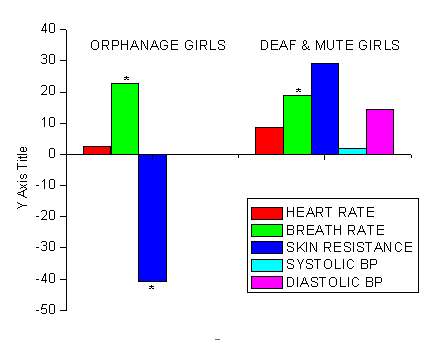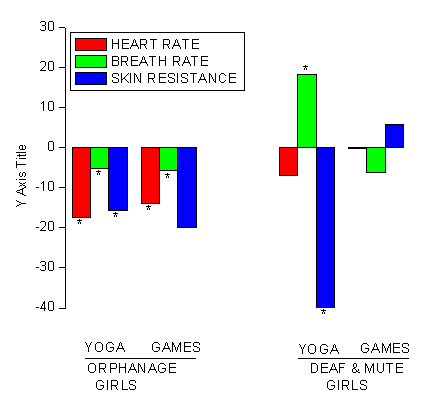Performance Analysis and Integration with Coaching
Download PDF
This paper reviews the key events occurring within a training session or match. The traning session equipped only with the knowledge of the sport in question and the innate powers of observation. Yet analysis based on accurate observation and recall is a key tool for improving future performance.
Performance Analysis and Integration with Coaching
Sri G.Shyam Mohan Reddy
ABSTRACT
This paper reviews the key events occurring within a training session or match. The traning session equipped only with the knowledge of the sport in question and the innate powers of observation. Yet analysis based on accurate observation and recall is a key tool for improving future performance. That's where the relatively new discipline of performance analysis comes in. Facilitating by advances in Information technology (IT) and digital photography, performance analysis (PA) is now acknowledged as an aid to performance enhancement at all levels. Essentially, PA is about creating a valid and reliable record of performance by means of systematic observations that can be analysed with a view to facilitating change.
INTRODUCTION
In any sporting situation, especially team games, it is difficult, if not impossible, for coaches to notice and remember all the events occurring during the match.
The process relies on two distinct sports science disciplines:
- notational/match analysis, which uses means to record aspects of team performance;
- biomechanics, which revolves around the sporting impact of body movements.
The two disciplines use similar methods to collect data and both rely on IT for data analysis. But the main thing they have in common is the use of measured observation during or after an event to quantify performance in an accurate, reliable and valid way.
Associate Professor, Dept. of Physical Education, Chaitanya Bharathi Institute of Technology, Hyderabad, Andhra Pradesh.
Coaching Process

The fact is, though, that while coaches are expected to be experts at observing and analysing performance, research has pointed to severe human limitations within these processes.
Two key studies have highlighted memory retention problems, with coaches able to recall only 30-50% of key performance factors they had witnessed, even with special training in observation.
The coaching process itself is not necessarily flawed, but it is obvious that the observation and analysis phases of this process have severe limitations. Although many great coaches are able to anticipate events and make appropriate changes to influence performance, even the best are prone to human error, leading to wrong decisions; hence the need for a systematic PA approach within coaching practice, using valid and reliable performance data to monitor and evaluate performers.
Without such an approach, coaches are liable to form biased opinions of their athletes' or players' performances, leading to potentially incorrect substitution decisions or training prescriptions. Technological advances and declining costs have given coaches access to laptop computers, digital cameras and analysis software, making the whole process of PA simpler and less arduous.
This process can be used to identify and measure a range of 'performance indicators' that have a real bearing on the outcome of any given sport, so providing a better understanding of how success can be achieved at all levels of performance.
These include:
- tactical indicators (patterns of play);
- technical indicators (technique/performance);
- physiological indicators (intensity profiles);
- psychological indicators (arousal, motivation).
Before deciding which performance indicators we wish to focus on in analysing the performance of your athletes, it is a good idea to consult a technical expert in your particular sport or study past research to identify indicators that are known to contribute to successful performance. Because the chosen indicators should guide how the system will be designed, we need to make these decisions first.
The first step is to create a logical structure to the game itself. This means defining the range of possible actions in the game and linking these actions with possible outcomes, thus describing the sequential path the performance can take.
Performance analysis have tended to focus on tactical and technical indicators and, in so doing, have contributed to our understanding of the physiological, psychological and tactical demands of many sports. For example, in basketball one aspect of a team's performance may be appraised by the ratio of shots taken to baskets scored, while in golf, performance may be assessed by the number of greens hit in regulation.
Indicators provide simple information that can be used to describe and define a particular performance. But it is important to be careful over how the data is presented since, in isolation, these can give a distorted impression of performance.
Comparing performances between teams, team members and within individuals is often easier and more accurate if the performance indicators are expressed in terms of ratios, such as possession to turnovers, winners to errors, and passes taken to passes completed.
An individual's performance profile can become distorted if the correct comparisons are not made, since profiles may differ according to the opposition. For example, presenting an individual soccer midfielder's performance could be misleading without comparison with the opposing player's or team's data.
Performance data for an individual can be presented in three ways to evaluate success:
- In relation to the opponent's data. This allows for a direct comparison with the opposition, but could be misleading if the players are not of a similar standard;
- In relation to players of the same standard. This allows for comparison between equals, which is useful providing data of this nature is available or can be compiled;
- In relation to their own profiles of previous performances. Over the course of a number of competitive matches, a normative profile of a player or team can be created for comparative purposes. A player can then be assessed against his own normative profile to assess the relative merits of his latest performance.
Performance can be analysed in two ways within team sports:
- Individual assessment of players within the team, for example strikers in football;
- Assessment of an aspect of performance for the whole team, eg monitoring of scoring effectiveness in basketball.
There are two main methods of coding the observations made within a sporting situation: 'live coding' and post-play coding. The former requires a high degree of competency in coding a sporting situation, with video footage fed directly into a laptop and coded via the keyboard as events unfold within the training session or game. With post-play coding, the video footage is again fed into a laptop and the information coded via the keyboard, with the advantage that the footage can be slowed down or reviewed more than once to ensure the observations are accurate.
Sequential Path of analysis

Movement sequences to be analysed
1. Headers -> won/lost? -> Position on the pitch
2. Shot -> header/foot? ->on target/off target?->Successful/unsuccessful
3. Possession-> won/lost? ->how won/lost -> position on pitch?
The players were also given individual goal-setting plans aimed at overcoming their weaknesses. To establish the value of the whole process, another full game was analysed in the same way four weeks later. The results showed significant improvement by the strikers and substantial progress towards their individual goals.
A performance analysis process was used to provide an objective analysis of the team's offence, producing a ratio of the number of plays run to the number of unstructured offences, and the success ratio for each type of offence.
The results were analysed for
- Plays : Instructured offences
- Percentage contribution
- Play success ratio success:insucessful offences
- Percentage Success
- Unstructure Success ratio success:unsucessful offences
- Percentage success
CONCLUSION
· The coaches can able to present their players with an objective demonstration of the value of using the plays practised in training with the information technology and digital photography.
· Filming four games in succession - two after the analysis - enabled the coaches to track
progress and provide positive feedback to the players.
References
- Coleman, S (1998) Biomechanics and its application to coaching practice. In Cross, N & Lyle, J (Eds). The Coaching Process: Principles and Practice for Sport (pp131-141). Reed Educational and Professional Publishing Ltd: Oxford
- Journal of Sports Science.
- Journal of Sports Behaviour.

















